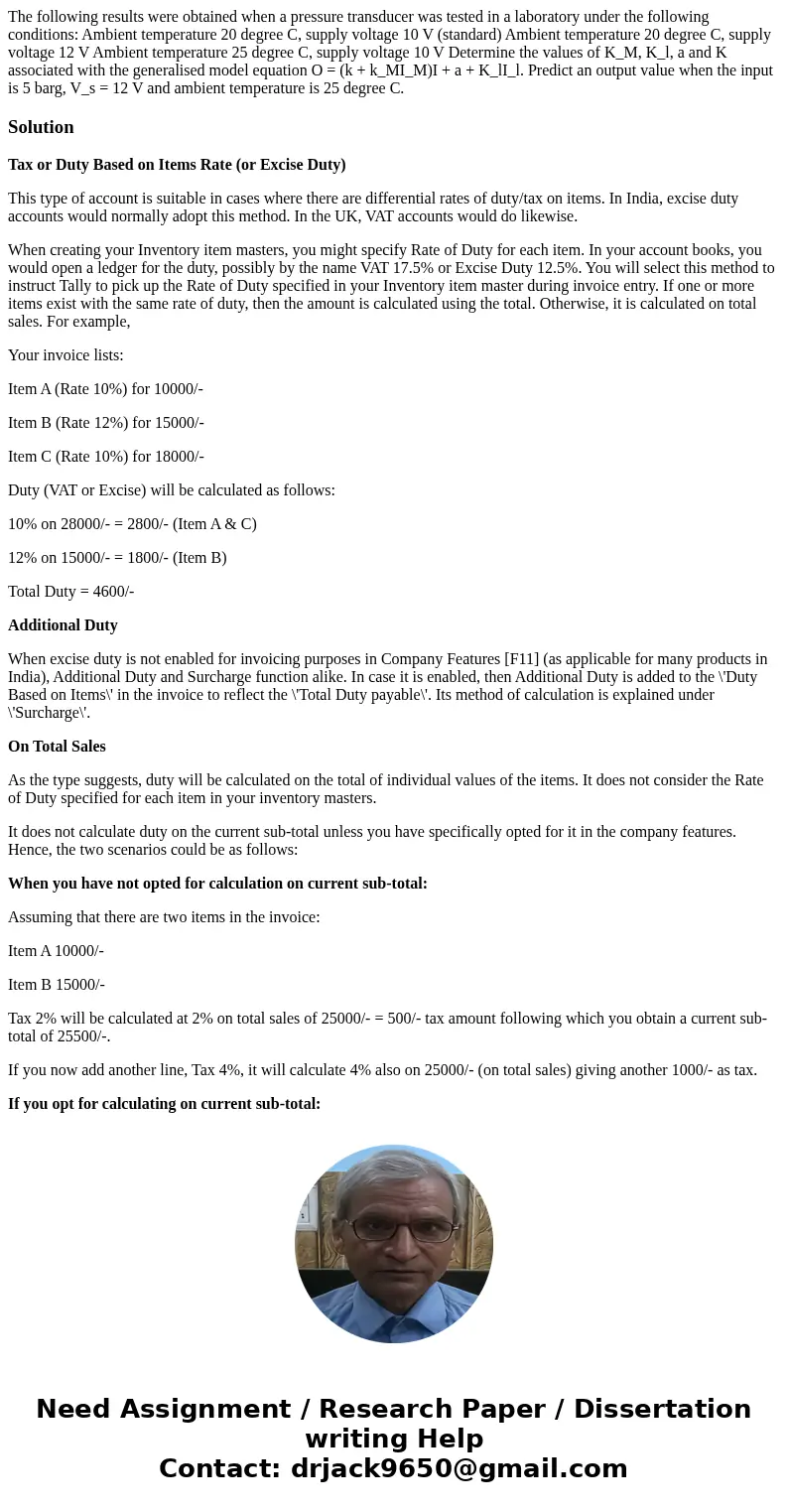The following results were obtained when a pressure transduc
Solution
Tax or Duty Based on Items Rate (or Excise Duty)
This type of account is suitable in cases where there are differential rates of duty/tax on items. In India, excise duty accounts would normally adopt this method. In the UK, VAT accounts would do likewise.
When creating your Inventory item masters, you might specify Rate of Duty for each item. In your account books, you would open a ledger for the duty, possibly by the name VAT 17.5% or Excise Duty 12.5%. You will select this method to instruct Tally to pick up the Rate of Duty specified in your Inventory item master during invoice entry. If one or more items exist with the same rate of duty, then the amount is calculated using the total. Otherwise, it is calculated on total sales. For example,
Your invoice lists:
Item A (Rate 10%) for 10000/-
Item B (Rate 12%) for 15000/-
Item C (Rate 10%) for 18000/-
Duty (VAT or Excise) will be calculated as follows:
10% on 28000/- = 2800/- (Item A & C)
12% on 15000/- = 1800/- (Item B)
Total Duty = 4600/-
Additional Duty
When excise duty is not enabled for invoicing purposes in Company Features [F11] (as applicable for many products in India), Additional Duty and Surcharge function alike. In case it is enabled, then Additional Duty is added to the \'Duty Based on Items\' in the invoice to reflect the \'Total Duty payable\'. Its method of calculation is explained under \'Surcharge\'.
On Total Sales
As the type suggests, duty will be calculated on the total of individual values of the items. It does not consider the Rate of Duty specified for each item in your inventory masters.
It does not calculate duty on the current sub-total unless you have specifically opted for it in the company features. Hence, the two scenarios could be as follows:
When you have not opted for calculation on current sub-total:
Assuming that there are two items in the invoice:
Item A 10000/-
Item B 15000/-
Tax 2% will be calculated at 2% on total sales of 25000/- = 500/- tax amount following which you obtain a current sub-total of 25500/-.
If you now add another line, Tax 4%, it will calculate 4% also on 25000/- (on total sales) giving another 1000/- as tax.
If you opt for calculating on current sub-total:
The above Tax 4% will be calculated on 25500/- (25000+500) giving 1020/- .
Surcharge on Tax
Surcharge and Additional Duty are charged on the immediately preceding entry. A surcharge is treated as a percentage of the duty levied. Tally expects the preceding line in the invoice to be the duty on which surcharge is to be calculated.

 Homework Sourse
Homework Sourse